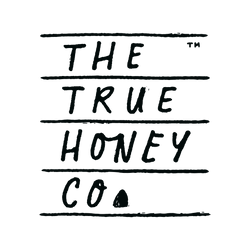
It’s September, and we’re well into Bee Aware Month in Aotearoa New Zealand. In part two of our two-part series to celebrate the month, we’re looking at how you can help bees to thrive in your own backyard.
New Zealand has a healthy bee population with nearly 925,000 hives, but bees still need our care and protection. They now have to fight off new parasites and diseases including varroa mites and American Foul Brood. There’s less native bush (we’re working with landowner partners to do something about that) and fewer ‘wild’ areas, while the use of chemical pesticides and herbicides has gone up.
You may have read about the threats facing these incredible creatures all around the world – like colony collapse, nasty pesticides like neonicotinoids and the loss of the world’s wild spaces. Turns out, as well as making honey, bees are essential to our agriculture and horticulture. And as much as we need them, they now depend on us to keep them safe. One way to do this is to make your backyard environment as bee friendly as possible.
A bunch of flowers
Bees need plenty of nectar and pollen to eat – and well-nourished bees with a varied diet are better at fending off disease and parasites. A wide variety of plants also makes it easier for you to provide them with constant flowers, especially from spring to autumn. But low maintenance urban landscaping devoid of flowers is leaving city bees feeling rather peckish.
To transform your borders into a bee buffet, plant clusters of the same flower species and look for single flowers with open shapes that are easy for bees to land on and get into. Likewise, plants with flower spikes (lots of flowers on each stem) help bees move quickly from flower to flower without using too much energy (flying is tiring, after all). And while bees adore blue and yellow, they barely know red exists. Good flowers to try include lavender, borage, marigolds, salvias, foxgloves and sunflowers, as well as culinary herbs like rosemary, thyme, coriander, sage and basil.
And although nosy neighbours may expect your lawn to be perfectly trimmed, bees prefer to live on the wild side – they’ll enjoy the daisies, dandelions and other hardy wildflowers that spring up when you leave nature to do its thing. Tip: try planting chamomile as a bee-friendly, lightly scented ground cover.
Nurture natives
Whenever possible, try to incorporate native plants into your landscape. They are already adapted to your area, and many perennial species bloom very early or late in the season, before or after annual flowers are at their prime. Native hebes, New Zealand jasmine, harakeke (native flax), pohutukawa, Mānuka, rewarewa, and lemonwood all make the cut. And native bees like native trees, so keep an eye out for these small, solitary creatures around native species. Trees for bees has some brilliant native planting ideas.
Give them a drink
In the insect Olympics, bees would not be winning any swimming medals. In fact, if the standing water in your garden is too deep, they can drown. Help them out by placing a couple of flat stones in a dish of water, or use a birdbath that has gently sloping sides. Bees also love moving water, so you could even invest in a little solar fountain, to float in your birdbath.
Homes, sweet homes
While honeybees live in hives made by humans, other bees need to build their own homes. The gorgeously fluffy, noisy bumblebee likes to live in colonies – often underground, in holes abandoned by rats or mice, usually with between 50 and 500 fellow bumbles. They’ll love your garden if you leave a few leaves or twigs lying around, rather than keeping everything tidy.
Honeybees and bumble bees are introduced species, but we do have three types of solitary native bees. Smaller than honeybees, if you see one in your garden, it might be nesting close by. You can also encourage solitary bees to nest in your garden. Ground-nesting bees are looking for undisturbed habitat to build their nests - so leave some garden debris on the ground. Other solitary bees prefer to nest in hollowed out tubes. If you’d like a DIY project, read all about building and managing a bee hotel.
Be spray safe
First, consider whether you really need to use pesticides or herbicides at all in your garden. Choose bee-safe pesticides if you are spraying your garden or consider whether spraying is necessary at all. If you absolutely must spray, leave it till the evening, when you can no longer see bees on your plants. This gives the pesticide time to evaporate off the plant before bees start foraging again in the morning.
Eat locally made honey
Bees create a huge range of delicious honeys. By eating these honeys you are creating an incentive to continue protecting and caring for bees, and making sure the environment is protected too. There’s a honey to suit your taste buds and wallet – from native monofloral honeys (like Mānuka), to herbal and multifloral types – look for interesting ones from your local bee keeper or farmer’s market. If your budget extends to a high rated Mānuka honey, make sure you choose one that’s authentic and made in New Zealand.

